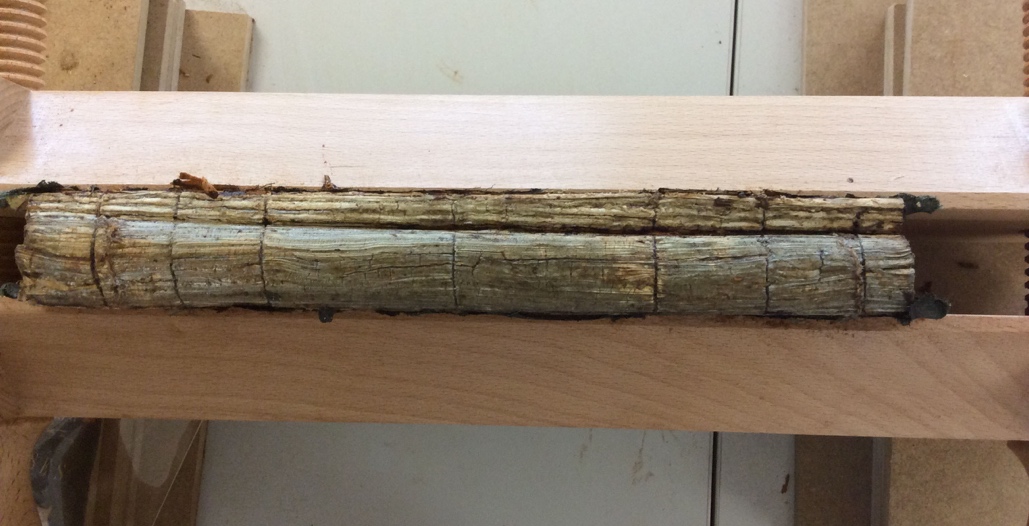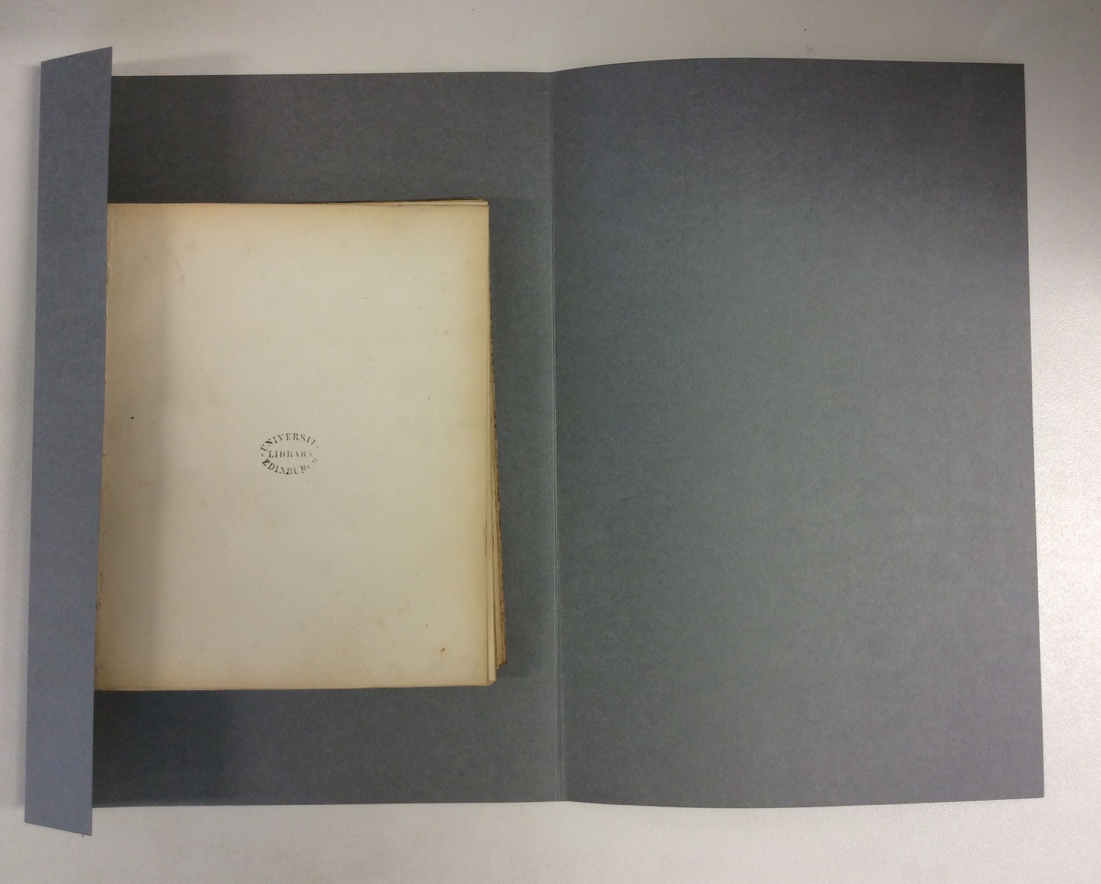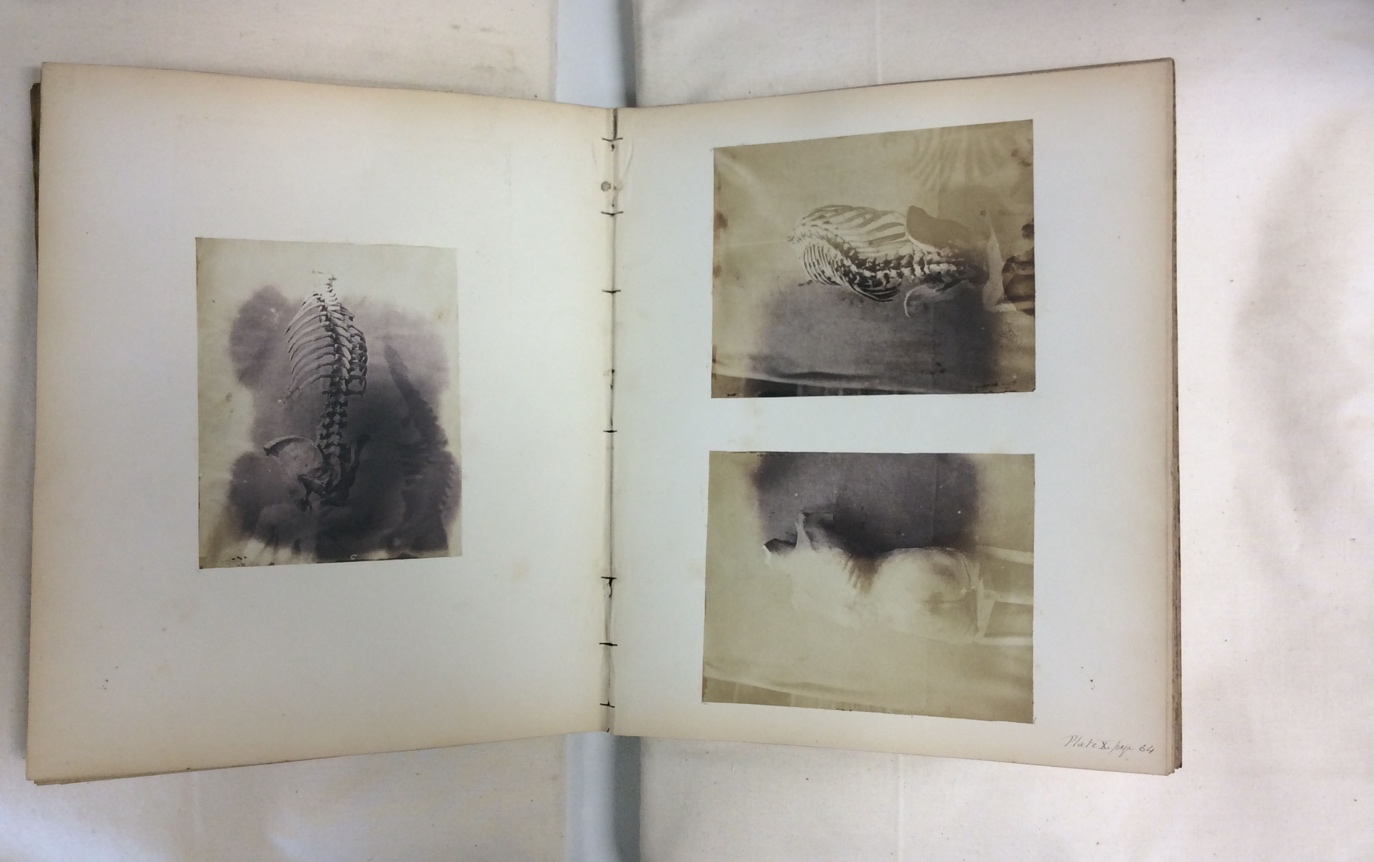In this week’s blog post, Projects Conservator Nicole, gives us an update on the work she is carrying out for the Thesis Digitisation Project…
I am currently working on a collection of theses ranging in date from 1838 – 1850. They consist of theses of all different sizes that have been bound in large book cloth bindings. Some bindings contain up to 9 individual theses, which has made the spine more than 10cm in width. With such large bindings and different sized pages, surface dirt has accumulated in between the individual theses, and the bottom of the spines have become distorted and narrowed.

Theses before conservation treatment
The theses have been whipped stitched individually and then they have been recessed sewn (also know as sawn-in cords) together. To make this a groove is sawn into the back (spine folds) of the text block where the sewing stations will be. This is a time saving way to bind a volume.

Old spine removed showing recessed grooves
Where the volumes have been opened, the sewing had broken and the spine has split and become detached. These large volumes not only make the theses difficult to access, but they are also too big to fit into the scanning equipment. To allow these items to be digitised, the books were dis-bound and methylcellulose was used as a poultice to remove the animal glue from the spine. The volume was then split into its individual theses, and each thesis is placed in its own acid-free folder within an acid-free box. This takes up more shelf space, but allows digitisation to take place without causing any damage.

Theses re housed in individual acid free folder
In the last theses I was dis-binding, I came across something really exciting – salted prints! I have come across ten in total which have been used to illustrate a medical thesis.

Salted prints found in medical theses
Salted prints date from 1840 – 1855 and are a positive photograph printed from a negative. The paper has been made photosensitive with chloride and silver nitrate. The negative is then placed on top of the paper and exposed to light. The exposure time can take up to a few seconds or minutes.

The salt prints sound really interesting … can you tell us which thesis they are from and wheyher you know the photographer?
Hi Geoff, Thanks for your comment. The thesis title is ‘Clinical observations of some of the more important injuries and diseases of the vertebral column’. It is from 1853 and the author is Robert Moir. The photographs are done by a Mr. Watson and are mainly of children, but that is all the information we have. Once scanned, the thesis will be uploaded on to the Edinburgh Research Archives (https://www.era.lib.ed.ac.uk/) and will be available free of charge, so you may be able to find more out then!
Emily